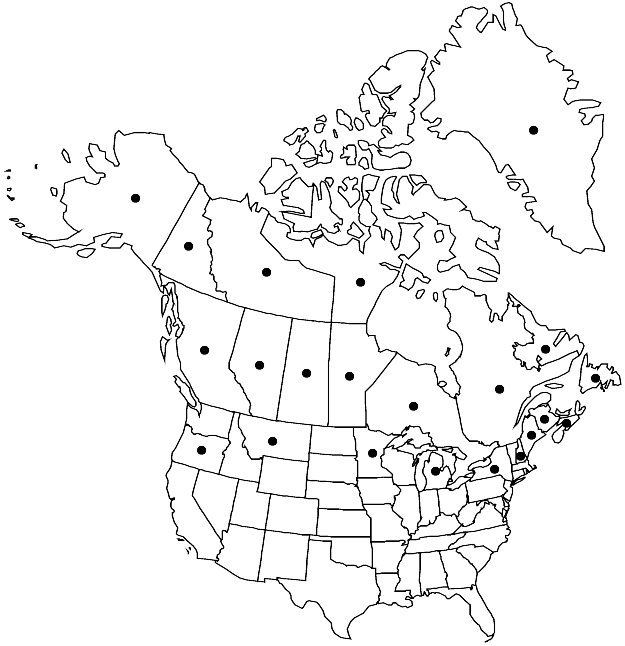Splachnum ampullaceum
Sp. Musc. Frond., 55. 1801.
Plants light green or yellow-green. Stems 1–2 cm. Leaves crowded at stem apices, long-lanceolate to narrowly oblong-obovate, 3.5–4 mm; margins deeply spinose-dentate distally, not bordered; apex slender-acuminate; costa disappearing in acumen somewhat before apex. Seta red or red-brown, 1.5–6.5 cm, flexuose. Capsule urn yellow-brown distally, 1–1.2 mm; hypophysis yellow or pink, rarely reddish, dark red with age, turbinate, much wider than urn, rugose; operculum hemispheric, blunt; exostome teeth inserted near mouth, connate in pairs, pale brown or orange-brown. Spores subspheric, 7–10 µm, yellow-green.
Phenology: Capsules mature early summer.
Habitat: Dung of large boreal herbivores (such as moose), muskeg, boggy habitats
Elevation: low to high elevations
Distribution

Greenland, Alta., B.C., Man., N.B., Nfld. and Labr., N.W.T., N.S., Nunavut, Ont., Que., Sask., Yukon, Alaska, Maine, Mich., Minn., Mont., N.H., N.Y., Oreg., n, c Europe, Asia (China, Japan, Siberia).
Discussion
Splachnum ampullaceum is the most common species of the genus in boreal North America; the plants sometimes grow with S. luteum in western North America and S. pensylvanicum in eastern North America. Splachnum ampullaceum is easily recognized by both sporophyte and gametophyte morphology. The name of the species is derived from its ampulla-shaped capsules with abruptly dilated bases. The hypophysis is broad, 2–6 mm wide, top-shaped, and it ranges in color from yellow to pink and dark red with age. The leaves, unlike those of other North American species in the genus, have deeply spinose-dentate margins.